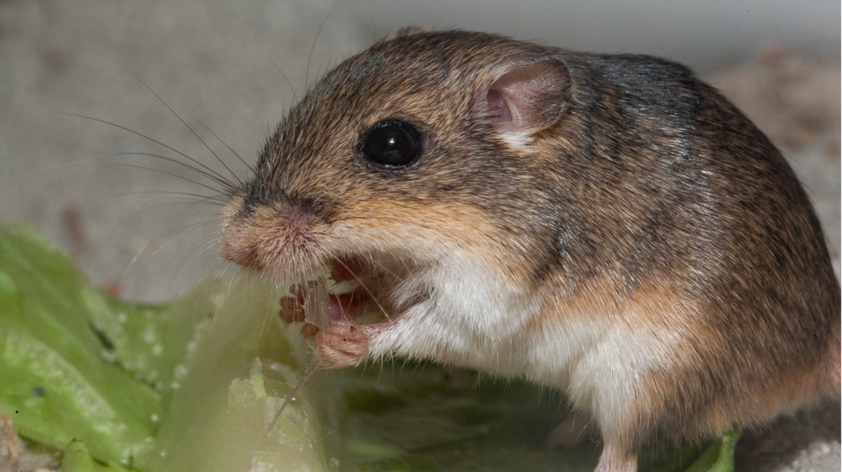
More powerful tools in the fight against extinction
Conservation of the Endangered Pacific pocket mouse
Once found in coastal habitats stretching from Los Angeles to the southern border, the critically endangered Pacific pocket mouse (pictured above) now persists in three small populations in Southern California, each isolated from one another by long distances and urban barriers. Continued population declines prompted the establishment of a conservation breeding program at the San Diego Zoo Institute for Conservation Research in 2012 to help save the species from extinction.
Previous blogs have described how genetic tools have helped us to better manage Pacific pocket mice both in the breeding program and in the wild. Genotyping hundreds of mice at about 20 different sites in each of their genomes shed light on population differences and genetic diversity, and helped us to better understand how a mouse’s reproductive success was related to its ancestry.
But these studies also raised a number of questions that could not be addressed with traditional genetic methods that use only a tiny fraction of the genome.
From Genetics to Genomics
What to do when a handful of genetic markers will not do? Sequence the whole genome!
We now have entire genome sequences for nearly 400 Pacific pocket mice from the three wild populations and the conservation breeding program. With each genome close to 2.6 billion base pairs in length, the raw data alone requires more storage than the capacity of twenty iPhone 7s combined, a figure that grows several times over during the process of analyzing.
Moreover, the computational power required just to align the data so that it can be boiled down to a set of informative genetic variants takes two weeks with the task spread across 30 CPU. (For reference, most laptops have 2 CPU.)
From these genomes (the first of its kind for a species in the family Heteromyidae), we have identified about 14 million genetic variants across the Pacific pocket mouse genome. We are hopeful that this far more complete and comprehensive dataset will allow us to address long-standing questions.
For example, a first analysis of this genomic dataset aims to understand the history of the Pacific pocket mouse. How large are the wild populations, how large have they been historically, and how recently did they decline? How long have the populations been isolated? Are there local adaptations that are unique to the different populations? Understanding their history will provide important information about the source of population declines and whether restoring migration between the isolated populations is an appropriate management strategy.
Stay tuned for future updates as we learn more about the history of the Pacific pocket mouse, its current status, and how we are applying genomics to help save them from extinction.













